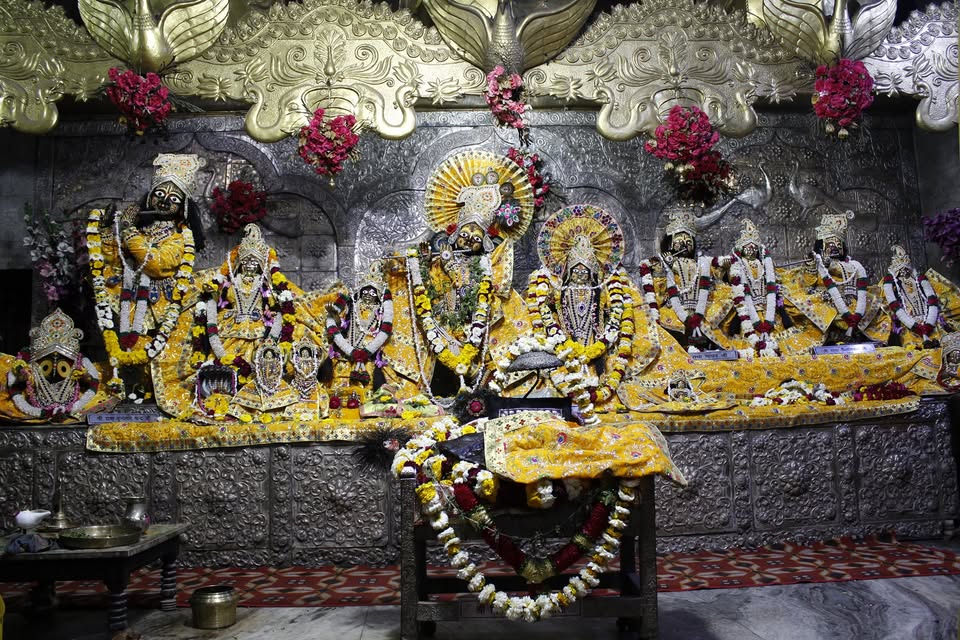Radhe Radhe! Welcome to one of the most spiritually significant temples in Vrindavan — Radha Damodar Mandir, where you can witness the actual footprints of Lord Krishna. Yes, it’s true. Inside this holy shrine lies a sacred Shila (stone) bearing Krishna’s divine footprints, along with the hoof marks of Kamadhenu, the celestial cow.
According to tradition, performing a parikrama (circumambulation) around this temple is considered equivalent to doing a full 25 km Govardhan Parikrama. Such is the spiritual potency of this temple.
Radha Damodar Mandir Timings
- Morning: 4:30 AM – 1:00 PM
- Evening: 4:30 PM – 9:00 PM
Devotees can visit during these hours to attend the Mangala Aarti, Bhog Darshan, and Shayan Aarti rituals.
Historical Foundation of the Temple
Radha Damodar Mandir was established in 1542 CE by the revered saint Jiva Goswami, one of the prominent disciples in the Gaudiya Vaishnavism lineage. The temple is located in Seva Kunj, the heart of Vrindavan.
In this temple, Lord Krishna is worshipped as “Damodar”, alongside Srimati Radharani, his eternal consort. It is one of the seven original Goswami temples of Vrindavan, holding immense significance in the Vaishnav tradition.
Spiritual Importance of the Govardhan Shila
One of the main attractions of Radha Damodar Mandir is the Govardhan Shila with Krishna’s footprints. Here’s the miraculous story behind it:
The Legend of Sanatan Goswami and the Shila
Saint Sanatan Goswami, a senior disciple of Chaitanya Mahaprabhu, used to perform daily Govardhan Parikrama in his old age. Seeing his physical struggle, Lord Krishna appeared in the form of a young boy and gifted him a special Shila (stone) with his own footprints and cow hoof marks, telling him that performing parikrama around this Shila would grant the same spiritual merit as walking the full Govardhan hill path.
This sacred stone is now enshrined in the Radha Damodar Mandir. Since then, thousands of devotees perform parikrama around this temple, believing it offers the same blessings as the 25-kilometer Govardhan circumambulation.
Aurangzeb’s Attack and the Shift to Jaipur
In 1670 CE, during the oppressive rule of Mughal Emperor Aurangzeb, the temple faced the threat of destruction. To protect the deities, the original idols of Radha and Damodar were moved to Jaipur for safekeeping.
Once the situation stabilized, the deities were brought back to Vrindavan, and the worship resumed at the original location in Seva Kunj.
Nearby Temples You Shouldn’t Miss
When visiting Radha Damodar Mandir, devotees are encouraged to also visit the nearby iconic temples of Vrindavan:
- Banke Bihari Mandir
- Radha Vallabh Mandir
All these temples are located close to each other and form a powerful spiritual triangle for pilgrims seeking divine darshan in Vrindavan.
Radhe Radhe! Jai Shri Radhe!



